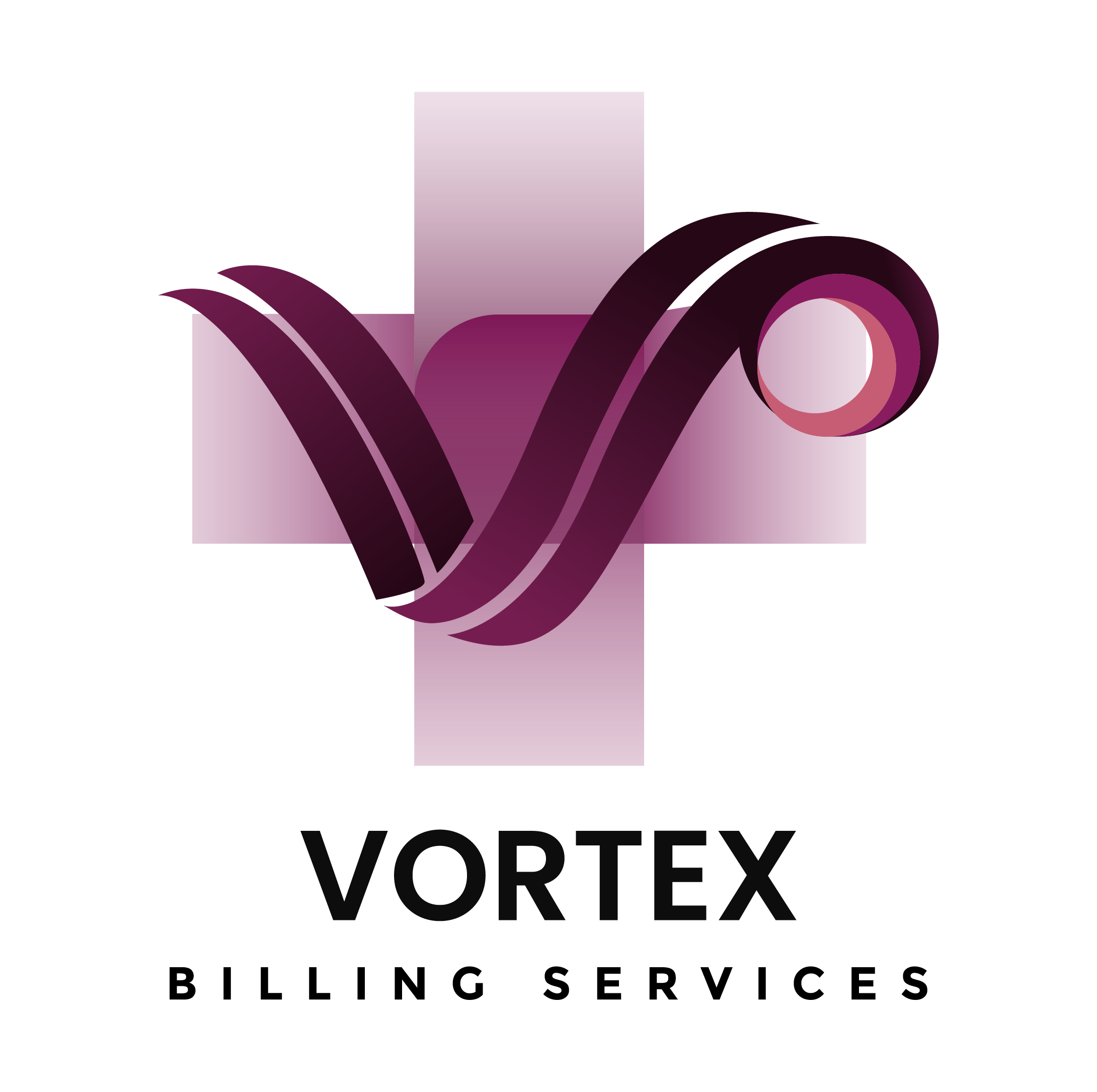AI RCM: Revolutionizing Healthcare Revenue Cycle Management in the USA
AI RCM is revolutionizing the healthcare landscape in the USA, especially for medical practices and clinics aiming to streamline billing processes and improve financial performance. By blending artificial intelligence with automation, providers are seeing substantial improvements in accuracy, speed, compliance, and cost-effectiveness. So, how exactly is AI RCM changing revenue cycle management? Simply put, it removes the human bottlenecks, predicts errors before they occur, and ensures faster reimbursements—all while keeping everything compliant and transparent.
Let’s dive deeper into how AI RCM is reshaping the future of revenue cycle management.
Understanding AI RCM
What is AI RCM?
AI RCM stands for Artificial Intelligence in Revenue Cycle Management. It refers to the application of machine learning algorithms, natural language processing, robotic process automation, and predictive analytics to manage the financial processes involved in a healthcare practice—from patient registration to final payment collection.
Traditional revenue cycle management involves a significant amount of manual labor. Think of all the repetitive and error-prone tasks like data entry, eligibility checks, coding, claims submission, and denial management. AI steps in here as the ultimate digital assistant—scanning, learning, and automating these processes with minimal human intervention.
The major components of AI RCM include:
- Automated claims generation and submission
- Real-time eligibility verification
- Predictive analytics for denials
- Automated patient billing and reminders
- AI-driven coding assistance
The goal? To ensure that healthcare providers get paid faster and with fewer errors, while spending less time chasing payments.
The Importance of AI in Modern RCM
AI RCM is not just a trendy buzzword it’s a practical necessity for healthcare systems drowning in administrative overload. As insurance rules get more complicated and patient demands for transparency increase, the need for intelligent automation becomes critical.
Imagine a system that can predict a claim denial before it happens, flag errors instantly, and adjust coding to match the latest CMS updates. That’s the kind of transformation AI brings. It’s like having a financial brain constantly working in the background, analyzing millions of data points to keep your revenue healthy and steady.
For new or expanding practices, AI RCM also means scalability. Instead of hiring a large billing team, a small clinic can manage its entire RCM process with just a few tools and a lean staff—saving thousands of dollars monthly.
Why the USA Healthcare Industry is Embracing AI in RCM
Regulatory and Compliance Pressures
The U.S. healthcare industry operates under a heavy burden of compliance. From HIPAA to CMS guidelines and insurance-specific rules, staying compliant is like walking a tightrope—one mistake and you risk audits, fines, or worse.
This is where AI RCM shines. It helps practices stay up-to-date with regulatory changes automatically. AI tools can:
- Auto-update coding changes (like ICD-10 or CPT)
- Generate audit-ready documentation
- Ensure that billing practices align with payer requirements
- Monitor for patterns that could indicate fraud or abuse
For compliance officers and administrative staff, this takes a huge load off their plates. AI doesn’t just assist—it proactively prevents non-compliance by identifying red flags before they escalate into bigger issues.
Plus, AI RCM systems typically come with built-in audit trails. So if you’re ever questioned about a particular charge or billing pattern, you have clear, time-stamped records to back you up.
Rising Operational Costs and Staffing Shortages
Let’s face it: hiring, training, and retaining billing staff in the USA is not cheap. Add to that the complexity of medical billing, and you’ve got a high-cost, high-risk administrative function that’s constantly under pressure.
AI RCM reduces the need for large billing departments by automating core functions. You no longer need a team of ten to manage your revenue cycle. A lean, well-trained team supported by intelligent software can do the job more efficiently and accurately.
This also makes AI RCM incredibly appealing to smaller or rural practices that struggle with budget constraints or staffing limitations. By reducing dependency on manual labor, clinics can focus more on patient care and less on paperwork.
Key Benefits of AI RCM for Healthcare Providers
Improved Accuracy and Fewer Denials
Errors in billing and coding are not just annoying—they’re expensive. Every denied claim means delayed payments, wasted labor, and in some cases, total revenue loss. AI RCM systems use predictive algorithms to catch these errors before they go out the door.
For instance:
- AI flags inconsistent coding
- It matches patient insurance coverage with required documentation
- It suggests optimal coding for maximum reimbursement
According to studies, AI RCM tools can reduce claim denial rates by over 30%. That’s a massive win for any practice struggling with revenue leakage.
AI systems also learn over time. The more data they process, the smarter they become—identifying patterns, catching anomalies, and constantly improving their accuracy rates. This means fewer headaches for your billing team and a much healthier bottom line.
Faster Claims Processing and Reimbursement
Time is money in the medical world. The faster a claim gets processed, the quicker you get paid. Traditional RCM processes can take days—or even weeks—depending on the insurer and the accuracy of the submission.
AI RCM automates the entire submission process:
- It pulls the necessary patient and treatment data
- Validates the data against payer requirements
- Submits claims electronically in real-time
- Tracks the claim status until resolution
This speed not only improves cash flow but also allows providers to focus more on care delivery than collections. Some clinics report a 25–40% faster turnaround time for reimbursements after implementing AI RCM systems.
AI-Driven Automation in Revenue Cycle Management
Machine Learning for Claims Prediction
One of the most powerful applications of AI RCM lies in its predictive engines. These machine learning models analyze historical data—such as claim submissions, rejections, billing patterns, payer responses, and even patient demographics—to forecast which claims are at high risk of denial. Think of it as your billing team’s sixth sense. When your system says a claim has a 70% chance of being rejected, you can proactively fix coding errors, update supporting documents, or verify coverage prior to submission. This significantly slashes denial rates, accelerates reimbursements, and boosts cash flow predictability. Over time, this becomes a feedback loop: the more claims processed, the more accurate the predictions, and the fewer manual interventions required—helping compliance-focused practices uphold documentation precision.
Robotic Process Automation (RPA) in Billing Tasks
Robotic Process Automation, another AI RCM pillar, mimics routine tasks that staff perform. Imagine bots that:
- Extract patient data from registrations
- Validate insurance eligibility
- Send reminder texts or emails for outstanding balances
- Process re-submissions for bounced claims
- Compile daily or weekly revenue reports
These bots work 24/7, don’t make data entry errors, and scale effortlessly. For technology-oriented practices eager to optimize staffing and reduce burnout, RPA offers a consistent, error-free workflow. This is a game-changer for medium-sized clinics and medical billing teams that need scalable solutions without ballooning headcount.
AI RCM and Data Security in Medical Practices
HIPAA Compliance Through AI
Data security isn’t optional in healthcare—it’s mandatory. AI RCM systems are architected with “built-in compliance.” They encrypt data in transit and at rest, limit access through role-based controls, and keep detailed audit trails of every access, edit, or submission. Now imagine automatically hashed logs, alert generation for unusual activity, and quick reporting dashboards—all ensuring your practice stays aligned with HIPAA and other regulatory frameworks. For compliance officers and administrative healthcare staff, AI RCM doesn’t just simplify security—it enforces it, giving peace of mind while reducing risk.
Real‑Time Monitoring and Threat Detection
Gone are the days when security was reactive. AI-driven RCM systems monitor your network and billing databases live—detecting anomalies like unauthorized access, bulk export of sensitive info, or suspicious behavior that might indicate a breach. These systems use behavioral analytics to flag anomalies, such as an accountant suddenly downloading thousands of patient records at midnight, or bots accessing billing APIs from unknown IPs. Admin alerts enable swift response and minimize damage. Security-conscious providers appreciate that AI acts as both a financial and cybersecurity shield.
Real‑World Applications of AI RCM in Clinics
Case Study: AI in a Mid‑Sized Private Practice
Take WestHealth Clinic (fictional but illustrative). Before AI RCM, they had a denial rate of ~12%, cash flow gaps of 45 days, and a three-person billing team working overtime. After implementing an AI-based claims prediction tool and RPA assistant for eligibility checks, denial rates dropped to 7%, average reimbursement time fell to 28 days, and the team reallocated 60% of time from chasing claims to patient outreach and compliance audits. Cost savings hit ~$130K annually—even after system subscription fees—while patient billing satisfaction climbed by 18%.
Impact on Multispecialty Clinics
In a real-world scenario, MedCore Multispecialty rolled out an AI RCM platform across 8 clinics. The result? A 25% reduction in administrative overhead, a 35% boost in net collections, and zero compliance violations over the first year. Their key benefit: an AI engine that auto-updated CPT/ICD rules for every specialty—from cardiology to dermatology—ensured that claims were coded correctly under evolving payer rules. This translated into fewer denials, better collections, and improved clarity for administrative staff handling diverse billings.
Challenges in Adopting AI RCM
Integration with Existing Systems
It isn’t always plug-and-play. Legacy practice management systems, EMRs, and billing platforms can present integration hurdles. Data formatting inconsistencies, poor API coverage, and concerns over downtime can delay implementation. That’s why a phased rollout is wise—first integrating the eligibility checker or denial prediction engine before migrating more complex tasks. To minimize disruption, choose vendor-neutral AI tools with robust connectors and an implementation partner skilled in healthcare systems.
Staff Training and Change Management
Even the most advanced AI RCM tool falters if no one knows how to use it. Staff need training—not just on how to click buttons, but why workflows now look different. That means running workshops, creating cheat sheets, and offering “office hours” during go-live periods. Engage billing specialists early, ask for their feedback, and highlight small efficiency wins. Change management is cultural—success hinges on ensuring people want the shift, not just tolerate it.
How to Choose the Right AI RCM Solution Provider
Features to Look For
When evaluating vendors, assess:
- Denial prediction accuracy above industry standard (30‑40% reduction)
- RPA bots for at least 5 core tasks (eligibility, reminders, follow‑up)
- Real‑time dashboarding for metrics like AR days, denial rates, clean claim %
- Automated CPT/ICD updates aligned to CMS
- HIPAA‑level security with encryption and audit logs
Prioritize solutions that evolve with payer rules and integrate with your practice management software.
Vendor Transparency and Support
Good AI is only as good as its accountability. Ask potential vendors:
- How often do you deploy coding rule updates?
- What’s your SLA for bots and analytics services?
- Can we get anonymized case studies from clinics like ours?
- What kind of onboarding timeline and ongoing training do you provide?
Support responsiveness especially in first 3‑6 months can make or break implementation success.
Cost‑Effectiveness of AI RCM in the Long Run
ROI Analysis
AI RCM systems often pay for themselves within 6–12 months. Here’s how:
- Fewer denied claims → more paid on first submission
- Faster claim processing → better cash flow and fewer borrowings
- Less manual labor → reallocated staff time to revenue-generating or patient-facing tasks
Most providers see ROI of 2x–4x within 2 years. Small clinics enjoy accelerated breakeven, while large groups scale savings linearly.
Reducing Administrative Overhead
By automating repetitive workflows—from patient pre-check-in to AR follow-up—clinics cut down on labor costs, overtime pay, and error costs. Moreover, transparency in RCM means fewer surprise write-offs and patient disputes—benefiting both revenue and patient satisfaction.
Compliance and Accuracy Through Automation
Auto-Updating with Regulatory Changes
In the USA’s highly regulated healthcare space, compliance isn’t just a checkbox—it’s a moving target. Insurance providers regularly update claim submission criteria, CMS frequently revises billing codes, and HIPAA rules evolve with data security trends. Manually keeping up? Nearly impossible. That’s why one of the standout features of AI RCM systems is auto-updating with regulatory changes.
These platforms pull from federal databases and payer updates to adjust their algorithms and coding suggestions in real time. Whether it’s a CPT code change from CMS or a payer-specific policy tweak, the system adapts instantly—flagging outdated codes and recommending compliant alternatives. This eliminates the guesswork and reduces compliance violations.
For providers seeking accuracy and transparency, these dynamic updates mean fewer errors, fewer resubmissions, and less stress during audits. It also fosters trust with patients who demand clear, accurate billing—especially in value-based care models.
Auditing and Documentation Features
AI RCM tools don’t just process claims—they document every action. Every field change, every submission, every edit—logged with timestamps and user IDs. This full audit trail ensures that clinics can:
- Easily respond to payer audits
- Validate internal billing accuracy
- Monitor staff activity for potential errors or fraud
Additionally, many systems offer intelligent audit preparation tools. Before a real audit ever occurs, the platform runs simulated audits, highlights inconsistencies, and suggests corrections. It’s like having a virtual compliance officer double-checking everything 24/7.
Practices can pull detailed audit logs in seconds—a task that might take hours manually. This not only boosts compliance confidence but also protects against revenue losses due to incomplete or missing documentation.
The Future of Revenue Cycle Management with AI
Predictive Analytics and Future Forecasting
Imagine being able to forecast next quarter’s cash flow, know which patients are likely to delay payment, or which insurance provider is most likely to deny your claims. That’s the promise of predictive analytics within AI RCM systems.
These tools crunch massive volumes of historical and real-time data to offer insights that shape strategy. Clinics can:
- Predict monthly claim acceptance rates
- Estimate revenue cycles by payer
- Allocate staff based on claim volume forecasts
- Model the financial impact of accepting new insurance plans
This is no longer reserved for hospitals with million-dollar systems. AI RCM platforms make these insights accessible to mid-size and even small clinics, leveling the playing field. It empowers administrators to stop reacting and start strategizing, enhancing financial health across the board.
AI’s Role in Value-Based Care
As the U.S. shifts from fee-for-service to value-based care, RCM must adapt. That’s where AI RCM thrives. Traditional billing systems weren’t built to handle quality-driven payment models, but AI-driven platforms can analyze clinical and financial data together to:
- Track patient outcomes vs cost
- Link reimbursement with care quality
- Highlight inefficiencies or over-utilization
AI ensures practices don’t just meet value-based requirements—they optimize for them. This proactive alignment leads to better care, stronger financials, and compliance with future-focused payer programs.
Getting Started with AI RCM
Initial Assessments
Before diving into AI RCM, clinics need a clear picture of their current revenue cycle health. This involves:
- Analyzing claim denial rates
- Measuring AR aging buckets
- Evaluating staff workflows and turnaround times
- Auditing for compliance gaps
With this baseline, practices can identify weak spots and set clear goals for automation—such as reducing denials by 20% or cutting AR days by 15%.
Most AI vendors offer free or low cost RCM assessments, which can serve as your launching pad. Use these insights to scope out your needs, budget, and integration plan.
Pilot Programs and Scaling
Don’t automate everything at once. Smart clinics start with pilot programs. Maybe just deploy the eligibility checker, denial prediction engine, or patient payment reminder bot.
Once the initial phase proves ROI often within 2–3 months you can gradually expand to other areas like coding assistance, full claims processing, and dashboard analytics.
Scaling becomes easier as staff build confidence and workflows become standardized. This phased approach reduces risk, improves adoption, and allows time for strategic adjustments based on results.
Best Practices for Implementing AI RCM
Aligning Technology with Practice Goals
Technology for the sake of it doesn’t work. You need alignment between your AI RCM tool and your practice’s vision. Are you trying to grow patient volume? Expand payer contracts? Improve patient satisfaction scores?
Make sure your AI RCM features match your KPIs. Want to reduce denials? Prioritize predictive engines. Want faster reimbursements? Choose tools with real-time submission and tracking.
Involve all departments from front desk to finance in these discussions. Cross-functional buy-in ensures smoother implementation and clearer value realization.
Ongoing Optimization and Support
AI RCM isn’t “set it and forget it.” These platforms perform best when monitored and optimized regularly. Conduct monthly performance reviews:
- Are denials decreasing?
- Is revenue increasing?
- Are patients paying faster?
If not, dig into dashboards and user behavior. Maybe staff need more training, or a feature is underused.
Also, maintain a strong relationship with your vendor. Schedule quarterly check-ins, request feature enhancements, and stay informed about updates. This keeps your RCM future-proof and continuously improving.
How Small and Expanding Practices Can Benefit
Leveling the Playing Field with Enterprise Clinics
In the past, only large hospitals could afford intelligent automation. Today, small and expanding practices are catching up fast—thanks to cloud based, subscription-model AI RCM platforms. With minimal setup and lower upfront costs, solo practices and new clinics can:
- Compete for patients with better billing transparency
- Maintain cash flow with fewer resources
- Scale rapidly without scaling admin staff
This democratization of tech means that even the smallest provider can match enterprise-level accuracy, compliance, and speed—without massive investments.
Enhancing Profitability with Limited Staff
Hiring is expensive. But with AI RCM, you don’t need a full team of billers. Even one or two staff members can manage hundreds of claims a week with automation handling the grunt work.
This means less burnout, better job satisfaction, and more strategic focus. Admins can analyze billing trends, negotiate with payers, or build out new services instead of just “processing claims.”
It’s smart growth—driven by smarter tools.
Conclusion
AI RCM is no longer a futuristic luxury it’s today’s strategic necessity. For U.S.-based healthcare providers, from solo practices to growing multispecialty clinics, it offers real, measurable advantages: fewer denials, faster payments, lower costs, and better compliance.
By leveraging automation, predictive analytics, and machine learning, practices can optimize every stage of their revenue cycle. And in an industry defined by regulation, complexity, and tight margins, that’s the kind of transformation worth investing in.
If you’re still stuck in manual billing mode, now’s the time to explore AI RCM and future-proof your practice.



